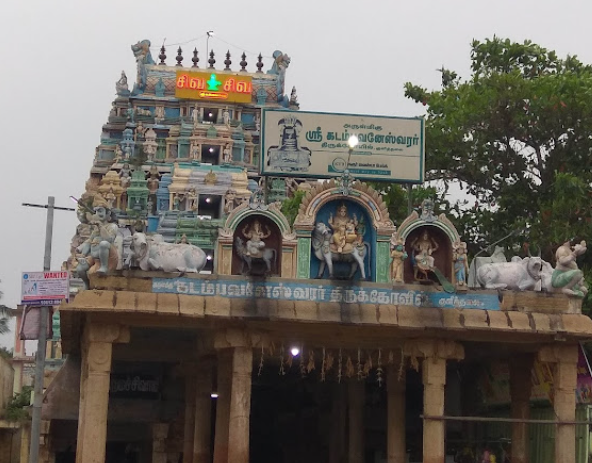Origin/History :-
The Kulithalai Kadamba Vaneswarar Temple is believed to have origins dating back to the 6th century, as it was praised by the revered saint Thirunavukkarasar Swamigal. Initially, the temple may have been a simple structure, which was later reconstructed as a stone temple during the Chola period. Subsequently, it underwent further extensions and enhancements by the Vijayanagara Empire.
Puranic Significance :-
- Divine Intervention: The Devas of the celestial world appealed to Mother Ambika for protection against the demon Dhumralochan. To combat him, Mother Ambika took the form of Durga. Despite her strength, she began to weaken in the fierce battle against the demon.
- Shiva's Assistance: In response, Lord Shiva sent the Sapta Kannikas (Seven Virgins) to assist Mother Ambika. However, the demon, fearing their power, sought refuge in the hermitage of Maharshi Katyayana. Mistakenly thinking he was the demon, the virgins killed the Rishi, incurring the Brahmahathi Dosha—a grave sin that darkens the sinner’s appearance.
- Penance and Redemption: To alleviate their sin, the Sapta Kannikas performed penance to Lord Shiva, who eventually granted them darshan from the Kadamba tree, leading to their absolution. As a result, Lord Shiva became known as Kadamba Vaneswarar, with bas-relief images of the Sapta Kannikas placed behind the Shiva Linga in the main shrine.
- Worship of Lord Muruga: Lord Muruga is said to have worshipped Lord Shiva at this temple to atone for his sin of killing the demon Surapadma.
- Brahma's Attainment of Mukthi: Lord Brahma, fatigued from his creation duties, prayed to Lord Shiva for Mukthi (liberation). Pleased with Brahma’s work, Lord Shiva advised him to worship Kadamba Vaneswarar and perform daily rituals at the sacred Cauvery river. After thousands of years of devotion, Brahma attained Mukti, having received darshan from Lord Shiva and Mother.
- Mukthi Sthalam: It is believed that devotees who worship Kadamba Vaneswarar in the morning, followed by Ayyarmalai Rathnagiriswarar and Thiruengoimalai Nathar in the evening, are assured of Mukthi.
- Pancha Kadamba Sthalams: The temple is one of the five Kadamba shrines established by Lord Subramanya. The other four are Kovil Kadambar, Aadi Kadambar, Ilankadambanoor, and Perunkadambanoor.
- Dakshina Kasi: Facing north, the temple is also referred to as Dakshina Kasi.
- Brahmapuram: The site is known as Brahmapuram due to Lord Brahma conducting a chariot festival there.
- Chatur Veda Puri: It is also called Chatur Veda Puri, as Lord Vishnu prayed to Shiva before retrieving the Vedas from Somasuran.
- Darshan to Kanva Rishi: Lord Shiva appeared before Kanva Rishi under the Kadamba tree, further enhancing the temple's sanctity.
- Connection to Meenakshi Sundareswarar: Devasarma is believed to have witnessed the wedding of Lord Sundareswarar and Meenakshi in this temple, leading to the deities being referred to as Sundareswarar and Meenakshi.
